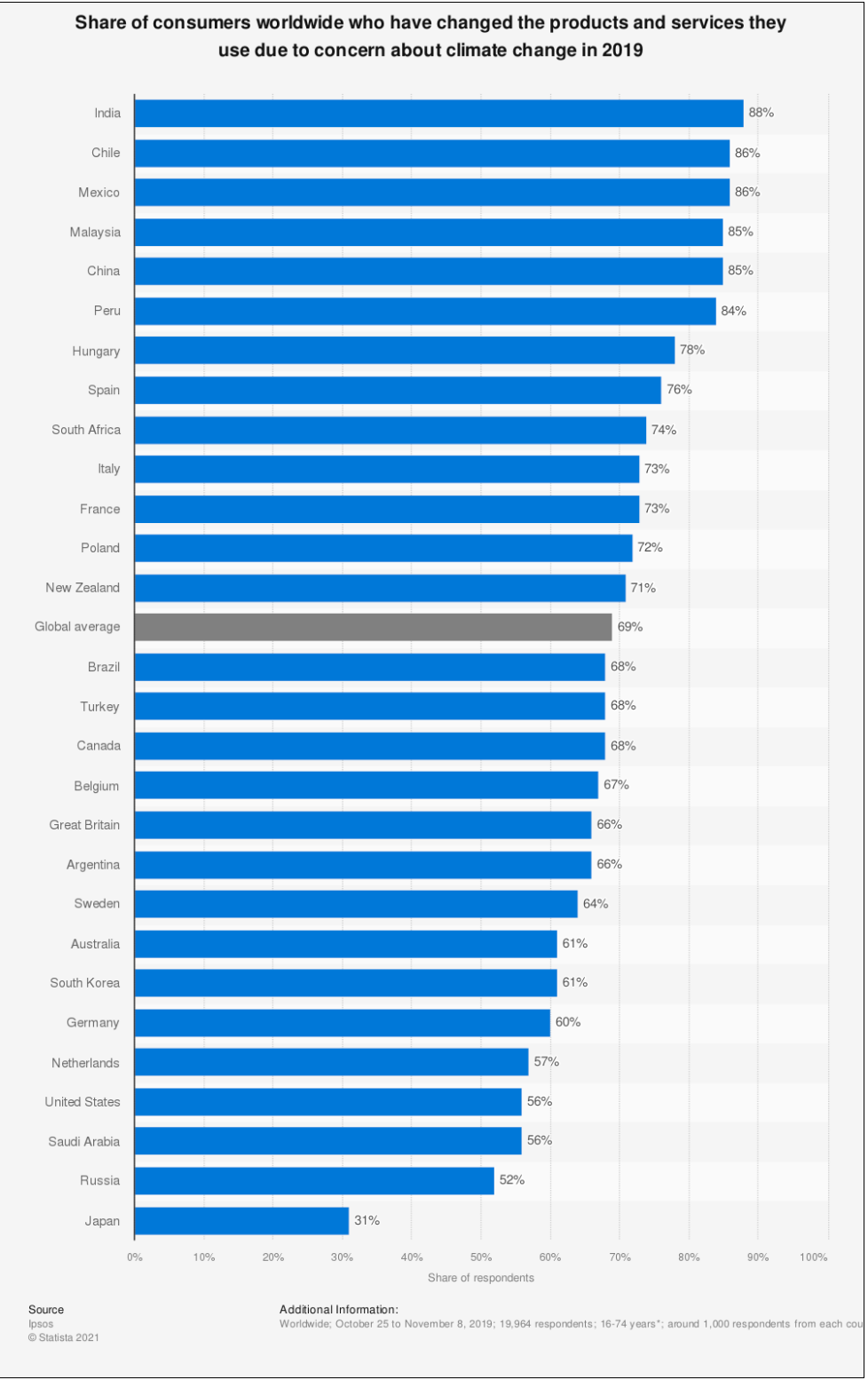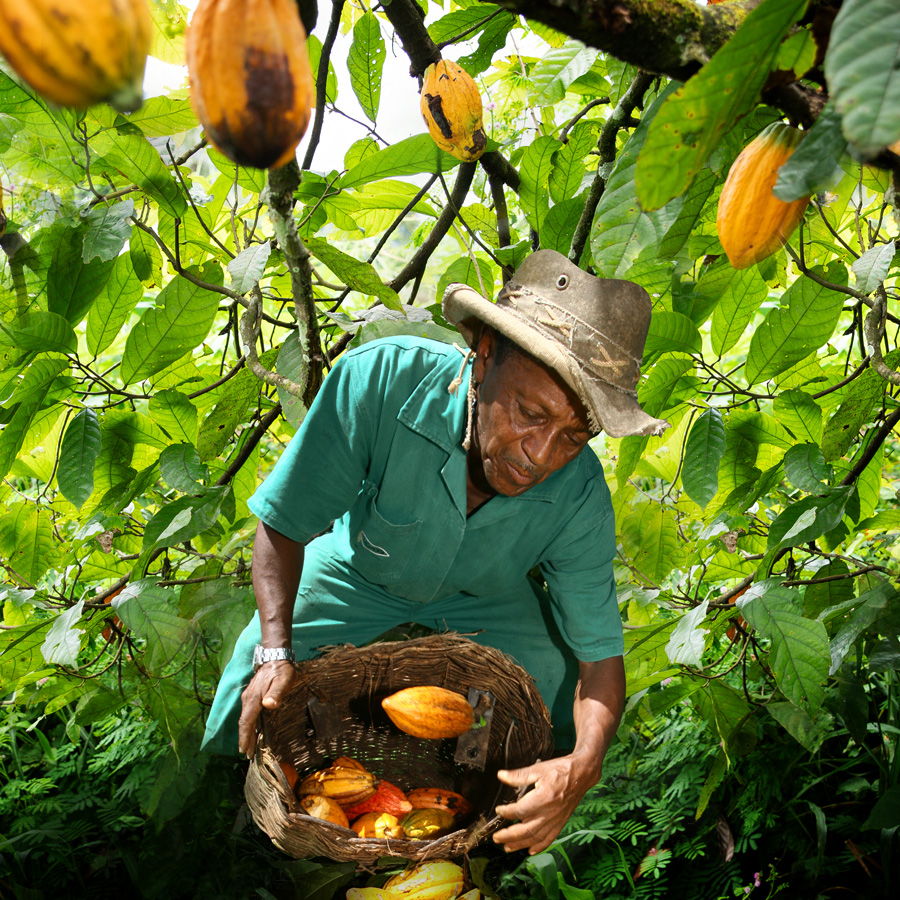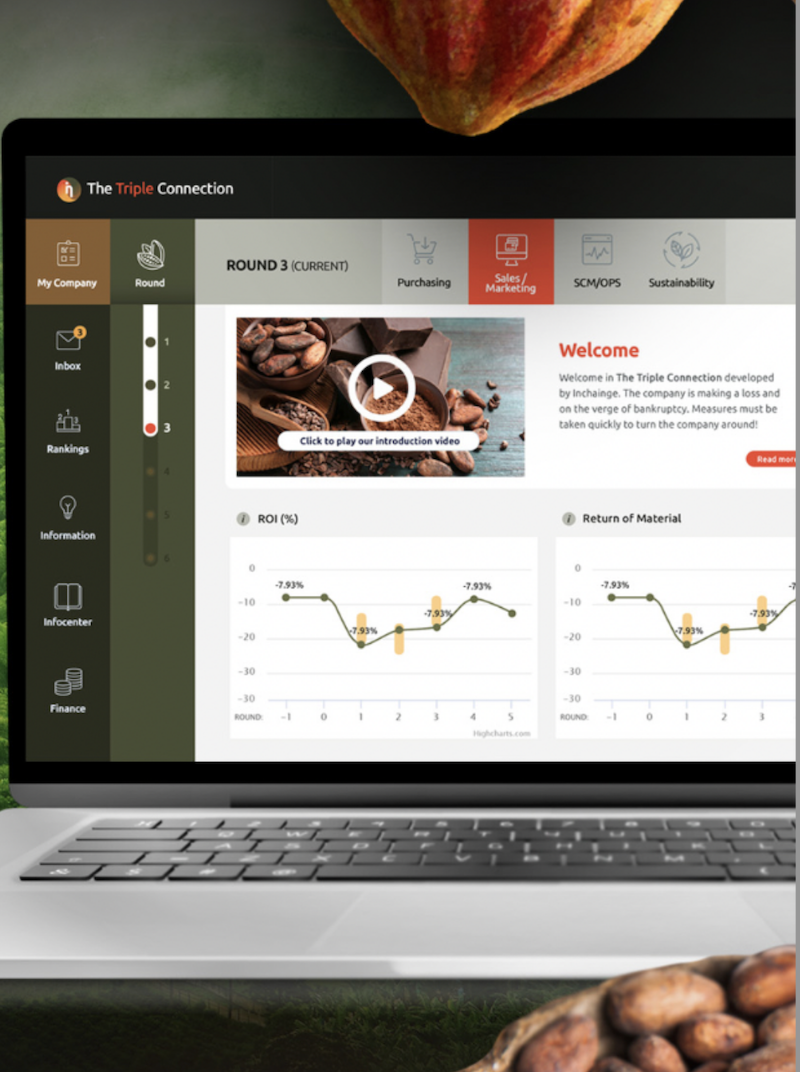The 3Ps Series: Planet
The 3Ps of sustainability – People, Planet, and Profit – enable a company to harness its complete potential and add real value to its business. In a post-COVID world, companies are quickly responding to the need for a greener, renewable and sustainable business strategy which can withstand unforeseen circumstances. Companies have to adapt a perspective where they prioritize multiple stakeholders rather than focusing on only bringing in revenue. In this series, we will discuss the ‘Planet’ aspect of the Triple Bottom Line and what it means for a company’s transition to sustainability.
What is ‘Planet’ in the 3Ps?
‘Planet’ forms the second leg in the 3Ps, right after ‘People’. There is a growing trend among consumers around the world to change the products and services that they use due to concerns about climate change. The graph below, according to a survey from IPSOS, suggests that a global average of 69% of consumers have made the change. It is interesting to note that consumers in developing economies such as India are willing to alter their consumption habits. On the contrary, consumers in economically developed regions such as the US and Japan have dropped below the global average.

Eco-conscious consumers are increasingly putting pressure on companies to take responsibility and adapt to sustainable business models. This way companies are heading to reduce their carbon emission and utilize finite resources to generate maximum value out of their products. They are attempting to engage in environmentally charged activities, which not only lead to profit but also ensure environmental sustainability.
The Ecological Pillar of Sustainability
When it comes to corporate sustainability, company directors and investors are aware of the pressure that consumers are putting on them to be more conscious. The ecological pillar compels them to be accountable and understand that they have to abide by certain rules and regulations concerning environmental issues. This also means that companies come under the close scrutiny of governments responsible for implementing policies which focus on environmental developments. The UN has set up Sustainable Development Goals which address specific environmental concerns, such as:
- To make cities and spaces more inclusive
- Combat climate change by focusing on increasing product lifespan
- Conserve finite resources from the waterbodies
- Promote sustainable use of ecosystems
- Focus on creating an inclusive and peaceful society
Companies are expected to abide by these concerns and to work towards improving on them.
The difficulty of assessing the Ecological Pillar
Despite its necessity, a challenge that businesses often face is how to measure the ecological pillar. Under the ‘Profit’ pillar which can be calculated in numbers, the Ecological Pillar cannot be reflected in income statements. It is also not always possible to quantify the waste generated or the CO2 emission, land reclamation, and other externalities which could be consequences of the company’s activities.
One quick solution to this, however, could be benchmarking. It is a fruitful process of understanding, identifying, and analyzing the practices which the company takes over for sustainable development. It is beneficial in comparing the company’s environmental performance against certain standards of measure, such as whether the company has reduced waste generation or if they have become energy efficient. In the case of a transport and logistics company, the benchmarking might help them gauge fuel spending or consumption of electricity. Benchmarking may differ across industries but it is a standard process of comparison through which companies can set their sustainable goals.
Want to know more?
Our latest business simulation game, The Triple Connection, engages its participants in implementing a sustainable strategy for a virtual chocolate milk manufacturer. The Triple Connection finds its roots in the cacao industry and follows the path to create maximum value in its sustainable value chain. This kind of value creation requires multiple high-level roles to align on the concept of the 3Ps: People, Planet, Prosperity!
 Now you know
Now you know
Now you know that the ‘Planet’ in the 3Ps refers to the Ecological Pillar of sustainability. It takes into account the impact of businesses and companies on the environment. The Ecological Pillar influences companies to create their business models by considering reduction of waste generation, efficient utilization of finite resources, and creating a safer ecological balance. The Ecological Pillar is largely influenced by the Social Pillar (or ‘People’ in the 3Ps) as consumers push companies to take responsibility. It might be difficult for companies to measure the Ecological Pillar since it does not reply well to numbers. However, with industry-wide benchmarking and government policies, companies can assess their ecological performance.
Sources
- The ‘People’ or social equity bottom line represents the right, well-being, and development of the people involved in a company’s establishment and development. It ensures better working conditions and overall fair treatment of not only a company’s employees but also all the workers who are involved in the value chain.
https://inchainge.com/knowledge/sustainability/the-3ps-series-people/ - The concept of the triple bottom line which includes the 3Ps – People, Planet, and Profit – was coined by John Elkington in 1994 in the California Management Review. * The idea of TBL is that while businesses have been chasing economic aspects – which is of course a primary goal for any business – they also have to take into consideration the social and environmental dimensions. They have to be integrated at the core of the business model, because, as Elkington points out, “the TBL agenda focuses corporations not just on the economic value that they add, but also on the environmental and social value that they add – or destroy.”
https://inchainge.com/knowledge/sustainability/the-3ps-of-sustainability/ - The Triple Bottom Line is defined by the Harvard Review as, “The triple bottom line is a business concept that posits firms should commit to measuring their social and environmental impact—in addition to their financial performance—rather than solely focusing on generating profit, or the standard ‘bottom line’.
https://inchainge.com/knowledge/sustainability/what-do-we-know-about-the-triple-bottom-line/
You might want to learn more about

The 3Ps Series: People
The 3Ps of sustainability – People, Planet, and Profit – enable a company to harness its complete potential and add real value to its business. In a post-COVID world, companies are quickly responding to the need for a greener, renewable and sustainable business strategy which can withstand unforeseen circumstances. Companies have to adapt a perspective where they prioritize multiple stakeholders rather than focusing on only churning revenue. In this series, we will discuss the ‘People’ aspect of the Triple Bottom Line and what it means for a company’s transition to sustainability.

The Triple Connection
The innovative web-based business simulation game, The Triple Connection, engages its participants in implementing a sustainable strategy for a virtual chocolate milk manufacturer. Participants will be confronted with various real-life, real-time dilemmas. They will be compelled to make decisions that are critical to maintaining a fair balance between profitability and sustainability.
Dive into our
knowledge base
Alignment
Blended learning
Experiential learning
Learning
Supply chain
Sustainability
- Sustainability
- Carbon footprint
- Circular Economy
- Does Green Governance drive the ride to a sustainable future?
- Everything You Need To Know About Eco-Efficiency
- Greenwashing: Everything you need to know
- Is it possible to measure the Triple Bottom Line?
- Sustainability v/s Circularity
- The 3Ps Series: People
- The 3Ps Series: Planet
- The 3Ps Series: Prosperity
- The Butterfly Diagram
- The Value Hill
- What are the 3Ps of Sustainability?
- What do we know about the Triple Bottom Line?

